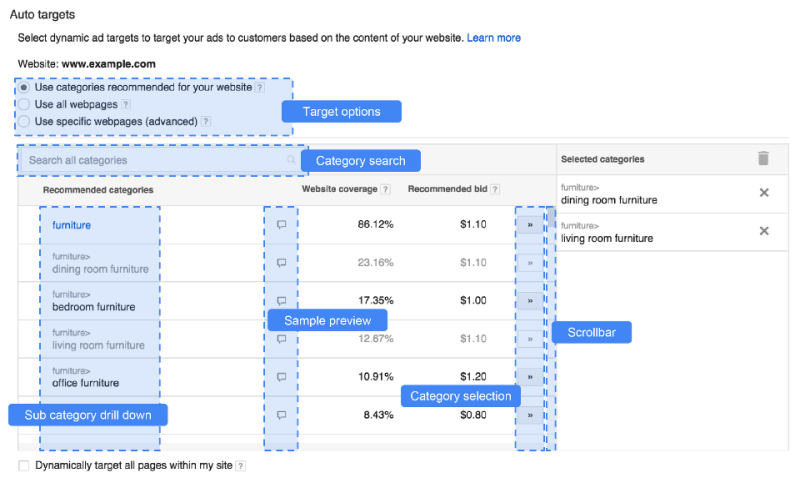What is AdWords Dynamic Search Ads or DSA’s?
Dynamic Search Ads or DSAs have been around now since October 2011 and they have allowed businesses to target customers based on web content and user searches. What this effectively meant was that if a user was to make a search, Google would crawl your site and if it found a relevant content match, would then automatically generate an ad with a headline and landing page. This would be based upon the content on your site and the query that generated the ad.
They were particularly designed for big sites with lots of content – such as property or recruitment sites, where DSA’s could save days in researching and setting up 1000’s of ad groups and ads. (A similar approach to Product Listing ads but for non-ecommerce websites).
Despite being easy to setup the take up of Dynamic Search Ads was relatively slow as it generated a lot of generic traffic and you actually had to spend more time adding negative keyphrases.
However Google has just announced a shake-up of Dynamic Search Ads which could mean that we are no longer dependent on finding keyphrases.
So what does Google’s shake up mean for Dynamic Search Ads?
Where previously your ads would only trigger for relevant landing pages, Google now digs deeper to further refine the searches to show not only top level categories such as clothing and homeware but also subcategories within these.
Google now creates a group of targetable categories, or a set of landing pages organised by theme; you have the ability to select how these are grouped and the level of granularity to go into.
For example, a furniture store selling a vast array of products may be broken down into bedroom furniture and office furniture etc. as seen in Google’s example below, delivering more targeted ads and landing pages to the users.
When setting up your Dynamic Search Ads Google will provide samples of the types of search queries your ads will target based on the categories found, as well as examples of text ads and landing pages. Google also provides bid recommendations based upon the performance of keywords in your other campaigns in the account.
Utilising your Dynamic Search Ads:
- Exclude all keywords from your search campaigns across your Dynamic Search ads to prevent cannibalisation. This allows you to find truly new and unique search terms and users as opposed to just re-shuffling this traffic in from elsewhere.
- Manually set your bids – this allows you to have the highest level of control against spend.
Why Use DSAs?
- Cover all bases by picking up relevant searches that are not already triggered by keywords in your account.
- Transparency allows you to see which categories are performing and what search terms are triggering your ads.
- Automatically generate relevant ads for every search.
- With Google suggesting that 15% of searches are unique and have never been searched before, what better way to capture these searches than automatic ads triggered by relevant website content.
- Quicker set up and easier management with no keyword lists.
Whilst you are still limited in the sense of selecting specific product pages, this category targeting is a great way to enhance your existing DSA targeting.
If you need assistance with configuring the new category option within Dynamic Search Ads or with your paid marketing channels, get in touch. Fill in our contact form or call us on 0116 2547224.




